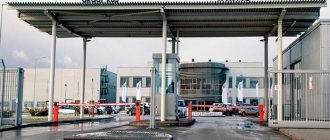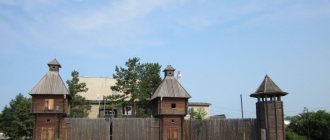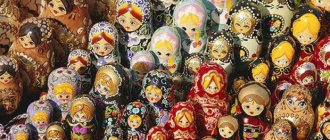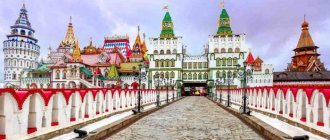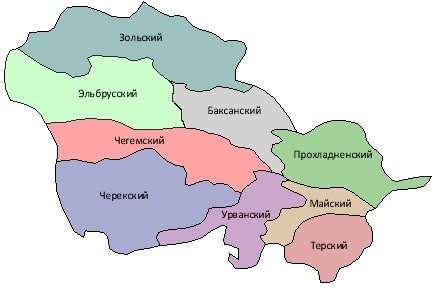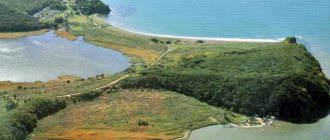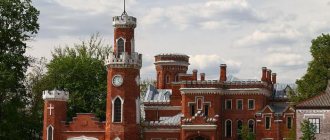The Leningrad region occupies only 0.49% of the country's territory, but boasts a rich historical past and a large number of natural and man-made attractions. Its area is 83,908 km², which puts it in 39th place in the ranking of constituent entities of the Russian Federation in terms of territory size. For comparison, the size of the largest Russian region, the Republic of Sakha, is 3,083,523 km²: 18 times larger. On the other hand, the area of the Moscow region is almost two times smaller and amounts to 44,329 km². These two subjects also have significantly different density indicators, although skewed in the other direction: 22.01 people/km² in the Leningrad region versus 171.36 people/km² in the Moscow region.
The largest cities of the Leningrad region
The Leningrad region includes 32 cities, among which there is not a single one with a population of more than 100,000 inhabitants. St. Petersburg is not included in its composition, as it forms a separate administrative unit. It is interesting that the area of settlements differs significantly from the population: of the top 10, only Vyborg is in second place in terms of population and in first place in area, while Sosnovy Bor simultaneously occupies fourth position in both indicators. Gatchina, a city with the maximum number of inhabitants - 94,447, is only in the second ten largest in size. On the other hand, Vysotsk, which ranks 31st in terms of population, closes the list of the largest in terms of area.
The largest cities in the Leningrad region include:
- Vyborg - 160.847 km².
- Volkhov - 108.21 km².
- Kirovsk - 84.9 km².
- Sosnovy Bor - 72 km².
- Otradnoye - 70.1 km².
- Kirishi - 63.34 km².
- Vsevolozhsk - 62.26 km².
- Svetogorsk - 49.54 km².
- Kingisepp - 44.03 km².
- Vysotsk - 39.81 km².
Content
- 1 Medium-sized cities 20-100 thousand people 1.1 Gatchina
- 1.2 Vyborg
- 1.3 Vsevolozhsk
- 1.4 Sosnovy Bor
- 1.5 Tikhvin
- 1.6 Kirishi
- 1.7 Sertolovo
- 1.8 Kingisepp
- 1.9 Volkhov
- 1.10 Tosno
- 1.11 Meadows
- 1.12 Shales
- 1.13 Kirovsk
- 1.14 Otradnoe
- 1.15 Communard
- 1.16 Nikolskoye
- 1.17 Pikalevo
- 2.1 Lodeynoye Pole
Vyborg is the largest in the Leningrad region
The largest settlement in the Leningrad region is Vyborg - one of the most interesting tourist destinations and a real island of the Middle Ages among luxurious imperial palaces and quaint noble estates. However, it cannot be called a metropolis - 160,847 km² and 77,400 citizens. The density is relatively low: 481.2 people/km². For example, in Moscow the level is 10 times higher and amounts to 4,931.78 km².
Since ancient times, Vyborg has had important strategic importance, acting as an outpost between the Scandinavian countries and the Russian state, as well as providing access to the sea. The official founding date of the city is 1293, when the Swedes founded the Vyborg Castle. However, it is known that the Korel tribes lived here already at the beginning of the first millennium. Today, the fortress built by Swedish soldiers and the buildings inside the massive stone walls are the main attractions of the city, attracting hundreds of thousands of tourists every year. Fortecia changed hands more than once until it was finally conquered by Peter the Great in the 18th century. However, after the revolution of 1917, the city went to Finland, returning to the USSR only after the Great Patriotic War: dilapidated and deprived of its former grandeur. The population grew rapidly: in the first post-war year alone it increased from 2,500 to 16,414, and by 1996 it reached 81,200. Despite the abundance of historical monuments, 35% of Vyborg’s income comes from industry, represented by such areas as:
- production of building materials;
- shipbuilding;
- food production;
- mechanical engineering;
- production of auto parts.
During many years of restoration work, most of the attractions were restored. The most atmospheric part of Vyborg is the Old Town, which is located behind the fortress walls. Walking along the cobblestone streets along the gloomy stone houses, you feel as if you are entering the medieval past of the castle. Authentic restaurants and themed events, such as knightly tournaments and fairs, add additional flavor. Among the most beautiful buildings in the city is the Vyborg Town Hall from the 17th century. The tallest building is the watchtower of St. Olaf, rising above the castle, and the oldest, made of stone, is the Merchants' Guild House, built in the 14th century.
Districts of the Leningrad region on the map
The region is divided into 17 districts. The largest districts by area:
- Vyborg;
- Tikhvinsky;
- Luzhsky;
- Boksitogorsky;
- Podporozhsky.
The infrastructure, location of streets, roads, houses, administrative buildings, train stations and attractions in each district will be helped by a map of the Leningrad region with settlements.
More than 30 major highways pass through the region, connecting the region with St. Petersburg, the Scandinavian countries, Moscow and other Russian cities. Part of the ring road around St. Petersburg passes through the Lomonosov and Vsevolozhsk districts, which can be seen on the detailed road map of the Leningrad region.
Passenger and cargo transport is also carried out by shipping. There are such large ports in the region as:
- Vysotsk;
- Ust-Luga;
- Primorsk;
- Kronstadt;
- Vyborg.
In addition to sea transport, large river vessels sail along the Neva and Volkhov rivers. Since Soviet times, the western regions of the region have remained a border zone through which ferries with automobile transport, cargo and passenger ships pass. If you look at the map of the Leningrad region in detail, you can find all the port border cities of the region.
To get to other cities in the country and abroad, residents of the region can use the only passenger airport of international importance, Pulkovo, which is located on the outskirts of St. Petersburg.
Volkhov is large in area, but its numbers are decreasing
Volkhov ranks only ninth in population with a population of 44,868, but in size it ranks second in the ranking with an indicator of 108.21 km². This is largely due to the fact that it was formed by the merger of several settlements:
- Zvanki station;
- workers' settlement Volkhovstroy for hydroelectric power plant builders;
- workers' village of Proletarsky;
- 5 small villages and hamlets.
In addition, Volkhov stands on two banks of the river of the same name, forming areas quite distant from each other. There are very few manufacturing enterprises in Volkhov: not counting hydroelectric power stations, there are only 8 of them, most of which are involved in the food industry. There are two branches of St. Petersburg universities, as well as several local colleges. Due to a lack of promising vacancies and a small variety of educational institutions, the last two decades have seen a decline in the number of city residents. Over the last decade, their number has decreased by more than 5,000 due to the migration of young people to Moscow and St. Petersburg, as well as a reduction in natural increase.
Economic indicators of the region
Living wage in the Leningrad region
The cost of living in the Leningrad region in 2016 is:
- — per capita only 8,722 rubles/month;
- — for part of the working-age population only 9255 rubles/month;
- — for pensioners – 7601 rubles/month;
- — for children – 8534 rubles/month.
GRP structure in 2015
Domestic regional product (GRP) is 714.0 billion rubles. (as of 2014)
Table of percentages of the contribution of various industries to the regional economy of the Leningrad region:
| Sectors of the economy of the Leningrad region | Interest |
| Industry | 39,1% |
| Agriculture | 30,6% |
| Construction | 6,7% |
| Trade | 17% |
| Other activities | 30,6% |
Pie chart of GRP in 2015
Quote from the speech of the Governor of the Leningrad Region Alexander Drozdenko:
“One of the priorities of the economic policy of the Leningrad region is the creation of comfortable conditions for attracting investment and developing the investment process.
Creation of favorable attraction of significant Russian and foreign investments in the development of the regional economy. Enterprises of the world's leading companies operate in the Leningrad region - Caterpillar, Ford, Nokian Tires, International Paper, Kraft Foods International, and several others.
The Leningrad region has won an innovative approach to business development that guarantees investors; we welcome new ideas and are pleased to expand the circle of both domestic and foreign partners.”
Message source
Population and national composition of the Leningrad region
The most populous are the municipal districts geographically adjacent to the center - the city of St. Petersburg. The least populated areas are in the eastern part of the Leningrad region.
The population of the Leningrad region has been increasing in recent years due to migration.
Main indicators characterizing the population and national composition of the Leningrad region:
Population - 1,779,422 people.
Population density - 21.21 people/km2
Urban population - 64.43%
According to the State Statistics Committee of Russia for 2016.
The overwhelming majority of residents of the region are Russians; Ukrainians, Belarusians and other nationalities are less represented.
In recent years, the number of large ethnic groups has increased in the Leningrad region, mainly emigrants from the CIS countries: Armenians, Azerbaijanis, Uzbeks, Tajiks, Moldovans.
Kirovsk is large in size, but not in number of inhabitants
Large in size (84.9 km²) and small in population (26,387 people) is Kirovsk, founded in 1931 and named after the revolutionary Kirov. There are plenty of jobs here: there is a state district power station and 10 industrial enterprises. In this regard, since 2000, the number of city residents, although slowly and unstable, has been growing: the value has increased by 3,000 over 20 years.
There are few attractions in Kirovsk, most of them are related to the Great Patriotic War. The most significant is the open-air museum “Breakthrough the Siege of Leningrad,” since bloody battles for the fate of the besieged city took place in the surrounding area. Among the unusual monuments is the sculpture of Peter I, recreated in 2013 according to surviving drawings, which was created by Putilov stonemasons in the mid-19th century on the outskirts of modern Kirovsk.
Small towns up to 20 thousand people
Lodeynoye Pole
Population 19,976 people (2016).
Priozersk
Population 18,755 people (2016).
Podporozhye
Population 17,895 people (2016).
Svetogorsk
Population 15,787 people (2016). Located in the border area (border with Finland)
Boksitogorsk
Population 15,451 people (2016).
Shlisselburg
Population 14,756 people (2016).
Syasstroy
Population 13,211 people (2016).
Volosovo
Population 12,187 people (2016).
Ivangorod
Population 10,502 people (2016). Located in the border zone (border with Estonia). The city is famous for the fortress of the same name, built in 1492 on the orders of Ivan III.
Novaya Ladoga
Population 8,483 people (2016).
Kamennogorsk
Population 6,732 people (2016).
Primorsk
Population 5,791 people (2016).
Lyuban
Population 4,610 people (2016).
Vysotsk
Population 1,131 people (2016).
Sosnovy Bor is a closed city with interesting monuments
Sosnovy Bor is the only city on the list that is simultaneously in fourth place in terms of number of inhabitants and size with values of 68,045 people and 72 km². Despite the fact that it was given city status only in 1958, the small village of Ustya was listed on the Ingrian map of 1676. The town is famous primarily for the nuclear power plant located here. In 1981, it was considered the largest in the world, and in 2002 it set a European productivity record, producing the 600th billion kWh. Because of the nuclear power plant, it is one of the so-called closed cities: foreigners are prohibited from entering here without special permission, and since 2013 Russians are allowed only with a passport.
In this regard, the town has themed attractions. Among them are a bust and a monument to Anatoly Petrovich Alexandrov, one of the founders of nuclear energy in the USSR, as well as a monument to the liquidators of the consequences of the nuclear power plant accident in Chernobyl. However, another one is more famous - Andersengrad: a children's entertainment area, stylized as a medieval town, as if straight from the pages of Andersen's fairy tales. It attracts not only kids: against the backdrop of cobblestone walls and houses with tiled roofs, atmospheric photographs are obtained.
Medium-sized cities 20-100 thousand people
Gatchina
Population 95,623 people (2016).
Vyborg
Population 79,350 people (2016).
Vsevolozhsk
Population 67,911 people (2016).
Pinery
Population 67,602 people (2016). The city is home to the Leningrad Nuclear Power Plant, launched in 1973.
Tikhvin
Population 57,970 people (2016).
Kirishi
Population 52,338 people (2016).
Sertolovo
Population 51,090 people (2016).
Kingisepp
Population 47,705 people (2016).
Volkhov
Population 45,585 people (2016).
Tosno
Population 38,289 people (2016).
Meadows
Population 36,148 people (2016).
Slates
Population 33,037 people (2016).
Kirovsk
Population 25,691 people (2016).
Otradnoe
Population 25,203 people (2016).
The Leningrad Shipbuilding Plant is located in the city on the banks of the Neva.
Kommunard
Population 21,743 people (2016).
Nikolskoye
Population 21,343 people (2016).
Pikalevo
Population 20,498 people (2016).
Map of the Leningrad region with cities and villages
There are more than 30 large cities in the region, all settlements, both large and small, can be seen on the map of the Leningrad region with cities and villages. The most significant settlements in the region in terms of area and number of people living are:
- Vyborg;
- Tikhvin;
- Gatchina;
- Sertolovo;
- Pinery;
- Volkhov;
- Kingisepp.
Almost all cities have characteristic “northern” architecture and many historical monuments. Architecture and identity of the local population. Thousands of tourists arrive in the region every day who want to see the most beautiful architectural and historical monuments in Russia, which are indicated on the map of the Leningrad region with villages. The main attractions and most interesting places in the region:
- Ulyanovka village – Sablinskie caves;
- Belogorka village – Eliseev’s estate;
- Nevsky Parkleskhoz village - the ancient Church of the Intercession;
- Priozersk – Konevets Island;
- Vyborg - Mon Repos;
- The city of Gatchina is a museum-reserve.
The list of attractions can be endless. If you go to visit this historical region of the country, use Yandex maps of the Leningrad region, which will become an indispensable assistant on your trip.
Economy and industry of the Leningrad region
The region's economy is represented by many industries. Hunting, fishing and forestry have always been and remain traditional for the region. The leading positions are occupied by such sectors of the economic sphere as:
- transport and communications;
- manufacturing;
- construction;
- energy.
A large number of enterprises in the light, food and processing industries operate in the region. Here they sew shoes, clothes, and produce plastic and metal products.
A great contribution to the region’s economy comes from investors who see great opportunities in the region for developing large businesses and opening large-scale investment projects.

